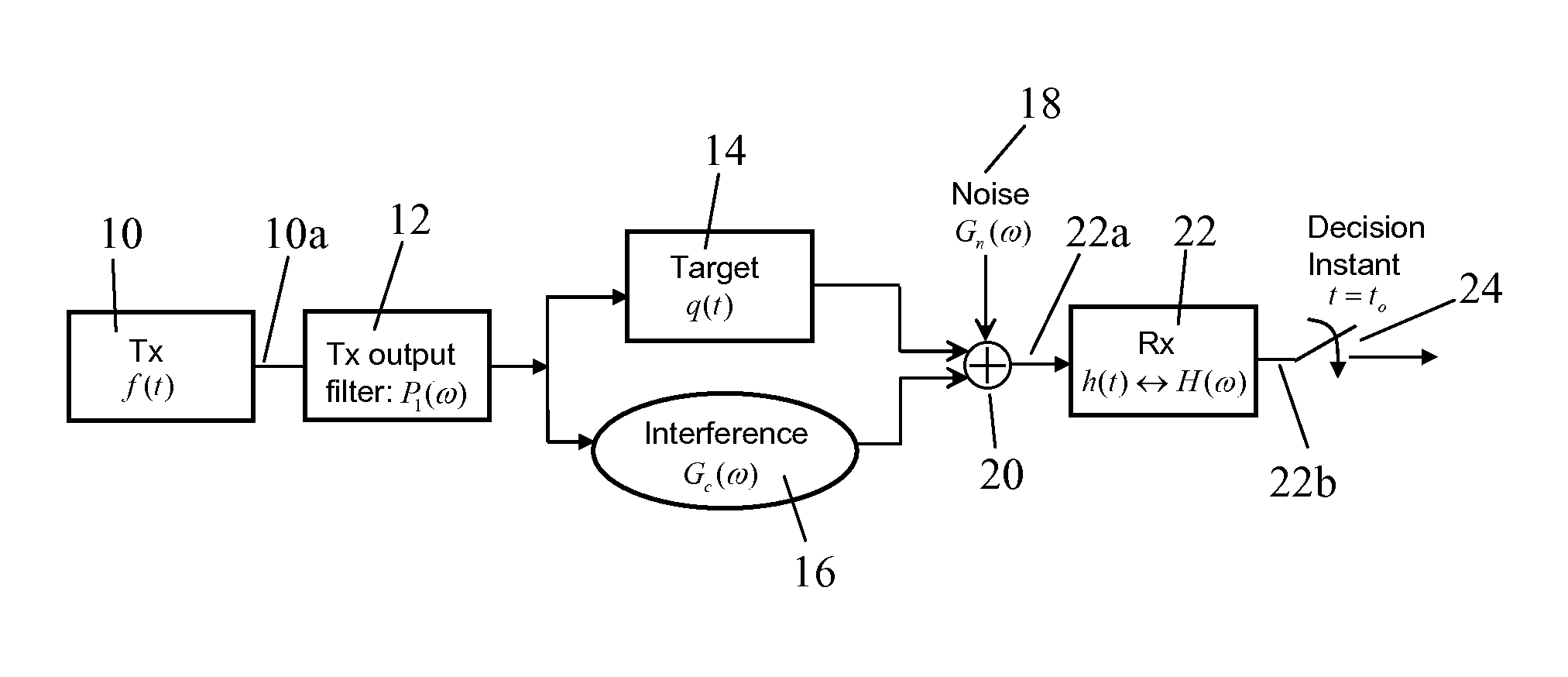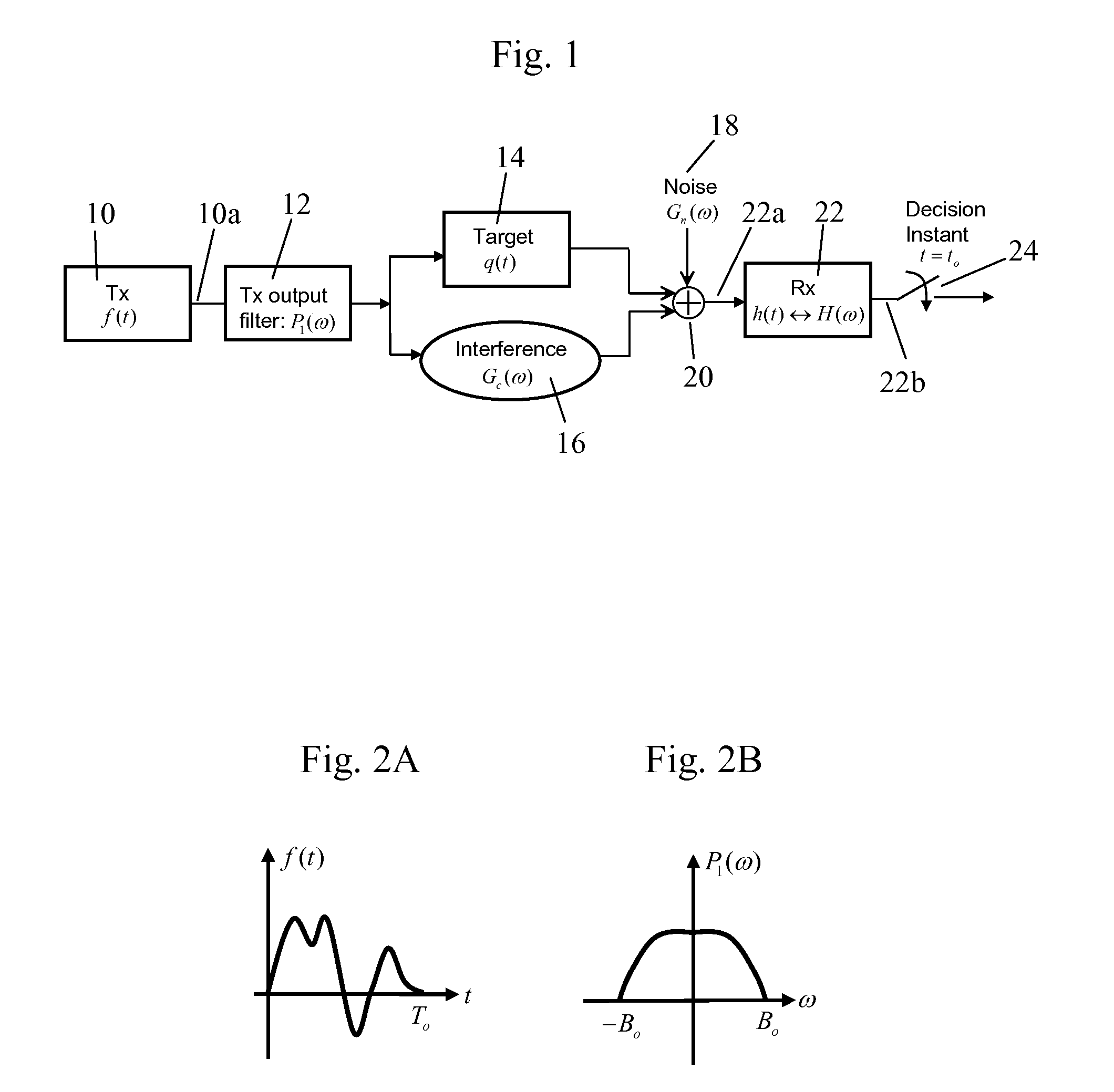Apparatus and method for providing energy—bandwidth tradeoff and waveform design in interference and noise
a technology of interference noise and amplifier, applied in the field of amplifier and method for providing energy, can solve the problems of releasing otherwise unavailable bandwidth at the expense of additional signal energy, and achieve the effect of minimizing total interference and noise output, enhancing desired signal output, and sacrificing performance level
- Summary
- Abstract
- Description
- Claims
- Application Information
AI Technical Summary
Benefits of technology
Problems solved by technology
Method used
Image
Examples
Embodiment Construction
—Desired Band Approach
[0094]One approach in this situation is to make use of the “desired frequency band” of interest B0 this is usually suggested by the target response Q(ω) (and the transmitter output filter) to determine the operating band Ω+. The desired band B0 can represent a fraction of the total available bandwidth, or the whole bandwidth itself. The procedure for determining Ω+ is illustrated in FIGS. 3A-3C and FIGS. 3B-3D for two different situations. In FIGS. 3A-3D, the frequency band B0 represents the desired band, and because of the nature of the noise and clutter spectra, it may be necessary to operate on a larger region Ω+ in the frequency domain. Thus the desired band B0 is contained always within the operating band Ω+. To determine Ω+, using equation (23) we project the band B0 onto the spectrum √{square root over (Gn(ω))} / |Q(ω)| and draw a horizontal line corresponding to
[0095]λBo=maxω∈BoGn(ω)Q(ω)(32)
as shown there. Define Ω+(B0 ) to represent the frequency regi...
PUM
| Property | Measurement | Unit |
|---|---|---|
| frequency | aaaaa | aaaaa |
| energy | aaaaa | aaaaa |
| transmit signal energy | aaaaa | aaaaa |
Abstract
Description
Claims
Application Information
 Login to View More
Login to View More - R&D
- Intellectual Property
- Life Sciences
- Materials
- Tech Scout
- Unparalleled Data Quality
- Higher Quality Content
- 60% Fewer Hallucinations
Browse by: Latest US Patents, China's latest patents, Technical Efficacy Thesaurus, Application Domain, Technology Topic, Popular Technical Reports.
© 2025 PatSnap. All rights reserved.Legal|Privacy policy|Modern Slavery Act Transparency Statement|Sitemap|About US| Contact US: help@patsnap.com



